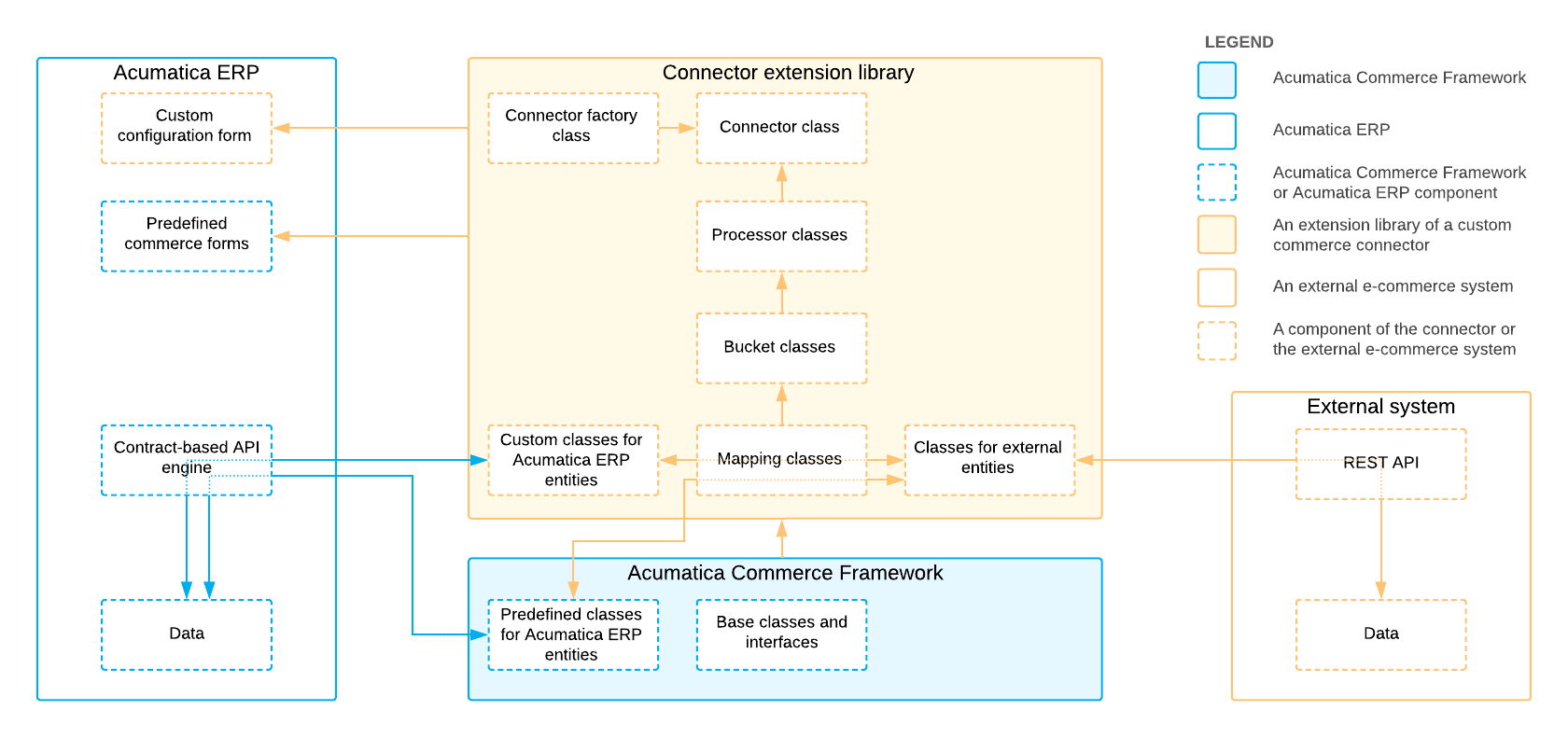Architecture of a Commerce Connector
A connector between MYOB Acumatica and an external e-commerce system is a plug-in that synchronizes particular entities in MYOB Acumatica with the corresponding entities in the external system. This synchronization can be performed based on a schedule or by a request received with a push notification.
Parts of the Connector
The connector consists of the following major parts, which are shown in the diagram below:
- Classes for MYOB Acumatica entities, which are adapters for the entities of the contract-based REST API of MYOB Acumatica. For more information about these classes, see Classes for MYOB Acumatica Entities.
- Classes for external entities, which are adapters for the entities of the REST API of the external e-commerce system. For details about these classes, see Classes for External Entities.
- Mapping classes, which define the mappings between internal and external entities. Mapping classes are described in Mapping Classes.
- Bucket classes, which define buckets of entities whose synchronization depends on one another. For more information, see Bucket Classes.
- Processor classes, which implement the synchronization of the entities between the external system and MYOB Acumatica. Processor classes are described in greater detail in Processor Classes.
- A connector class, which connects other classes of the plug-in to the commerce forms of MYOB Acumatica and defines the settings for these forms. For details about the implementation of the connector class, see Connector Class.
- A connector factory class, which initializes the connector. For details about the connector factory class, see Connector Factory Class.
- A configuration form, where the basic settings of the connector are specified. For example, for the built-in BigCommerce connector, the configuration form is BigCommerce Stores (BC201000).

